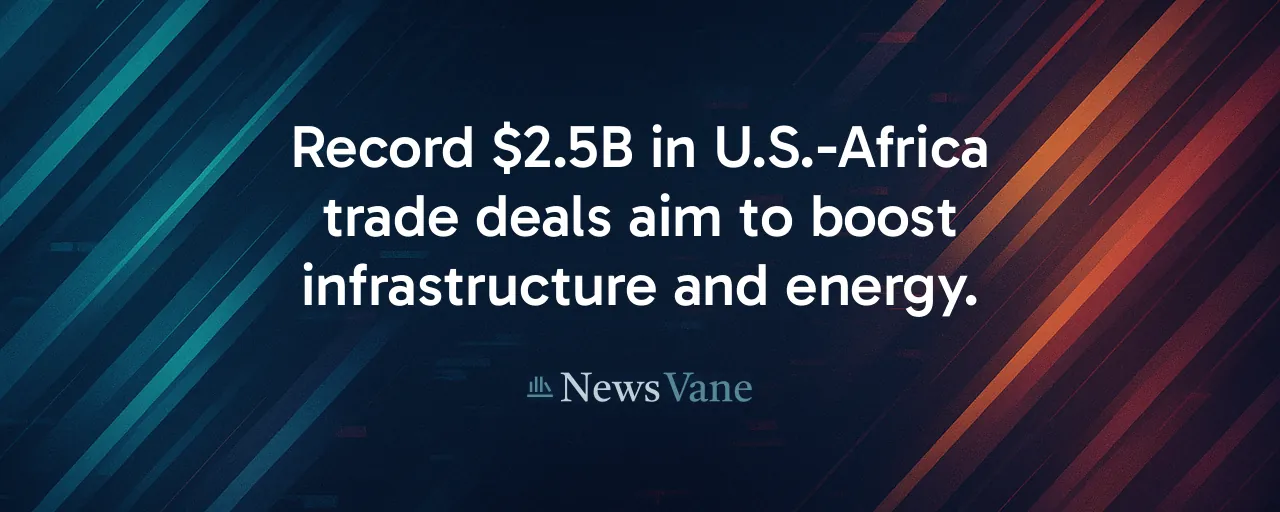A Record-Breaking Summit
Luanda, Angola, hosted a landmark event in late June 2025. The 17th U.S.-Africa Business Summit drew over 2,700 leaders, including 12 African heads of state and a high-level U.S. delegation. The gathering, organized by the Corporate Council on Africa and Angola's president, marked the largest-ever business convening between the two regions. It signaled a renewed focus on economic partnerships.
The summit's headline achievement was $2.5 billion in new trade and investment deals. These agreements spanned infrastructure, energy, and digital technology, reflecting a shared ambition to deepen ties. From grain silos in Angola to hydropower in Rwanda, the projects aim to address pressing regional needs while opening doors for U.S. firms.
Global competition for Africa's markets and resources is intensifying. The summit's outcomes raise a critical question: Can these deals deliver lasting prosperity for both sides?
Big Projects, Bigger Promises
The summit's deals target transformative change. A Florida-based consortium, Amer-Con Corporation, partnered with Angola to build 22 grain silo terminals along the Lobito Corridor. Backed by the U.S. Export-Import Bank, this project aims to bolster Angola's food security and streamline agricultural logistics. Similarly, U.S. firm Cybastion signed a $170 million deal with Angola Telecom to expand digital infrastructure and cybersecurity, including local training programs.
Energy projects also took center stage. A $1.5 billion agreement between U.S. investor Hydro-Link and Angola will develop a 1,150-kilometer transmission line linking Angolan hydropower to mineral mines in the Democratic Republic of Congo. This corridor could deliver 1.2 gigawatts of electricity, powering mining operations and regional energy needs. In Sierra Leone, a new LNG terminal deal promises affordable energy for households and industries.
These initiatives reflect a broader shift. The focus has shifted to investment-led growth, departing from traditional aid. Academic research supports this approach, showing that infrastructure investments can spur regional integration when executed well. Success hinges on overcoming practical hurdles like financing delays and local capacity gaps.
Balancing Opportunity and Risk
The summit's momentum is undeniable, and challenges loom. Large-scale projects often face bureaucratic delays, political instability, or corruption risks. Studies on similar initiatives show that up to 30% of infrastructure deals in Africa encounter significant implementation setbacks. Ensuring transparent governance and predictable legal frameworks is critical to turning announcements into reality.
Social impacts also demand attention. While projects promise jobs and electricity access for millions, they can disrupt communities or unevenly distribute benefits. For instance, hydropower developments like the Ruzizi III project in Rwanda and the DRC could displace local populations if not carefully managed. Workforce training and inclusive planning are essential to address these concerns.
Economic risks add another layer. Recent U.S. tariffs on certain African exports could raise costs and strain trade relations, especially as the African Growth and Opportunity Act (AGOA) nears its 2025 expiration. Analysts warn that without exemptions or renewed trade preferences, these barriers could offset the summit's gains.
Lessons From the Past
History offers valuable context. Since the 2000 launch of AGOA, U.S.-Africa trade has grown, particularly in textiles and agriculture. Research shows AGOA boosted apparel employment in East Africa, proving that targeted trade policies can drive diversification. Inconsistent U.S. engagement and competing global players have limited deeper integration.
Past initiatives like Power Africa and Prosper Africa aimed to bridge gaps but faced criticism for slow delivery. The 2025 summit emphasizes private-sector leadership and ambassadorial advocacy. Studies confirm that diplomatic efforts can increase foreign direct investment when paired with clear regulations. This approach aligns with Africa's rising agency and demand for equitable partnerships.
Building a Shared Future
The summit's deals mark a step toward stronger U.S.-Africa ties; their success depends on execution. Stakeholders agree that lowering non-tariff barriers and investing in local skills are key. For example, training programs tied to Cybastion's digital initiative could create sustainable jobs, while community engagement in energy projects can ensure broader benefits.
Common ground exists for progress. Modernizing AGOA into a broader economic partnership could balance trade preferences with mutual commitments. Transparent, climate-resilient infrastructure funding and workforce development align with both U.S. and African goals. Targeted tariff relief for AGOA-eligible goods could further ease tensions.
As global competition intensifies, the U.S.-Africa relationship stands at a crossroads. The summit's outcomes offer a blueprint for collaboration; only sustained effort will turn ambition into impact. By prioritizing inclusive growth and practical solutions, both regions can forge a path to shared prosperity.
